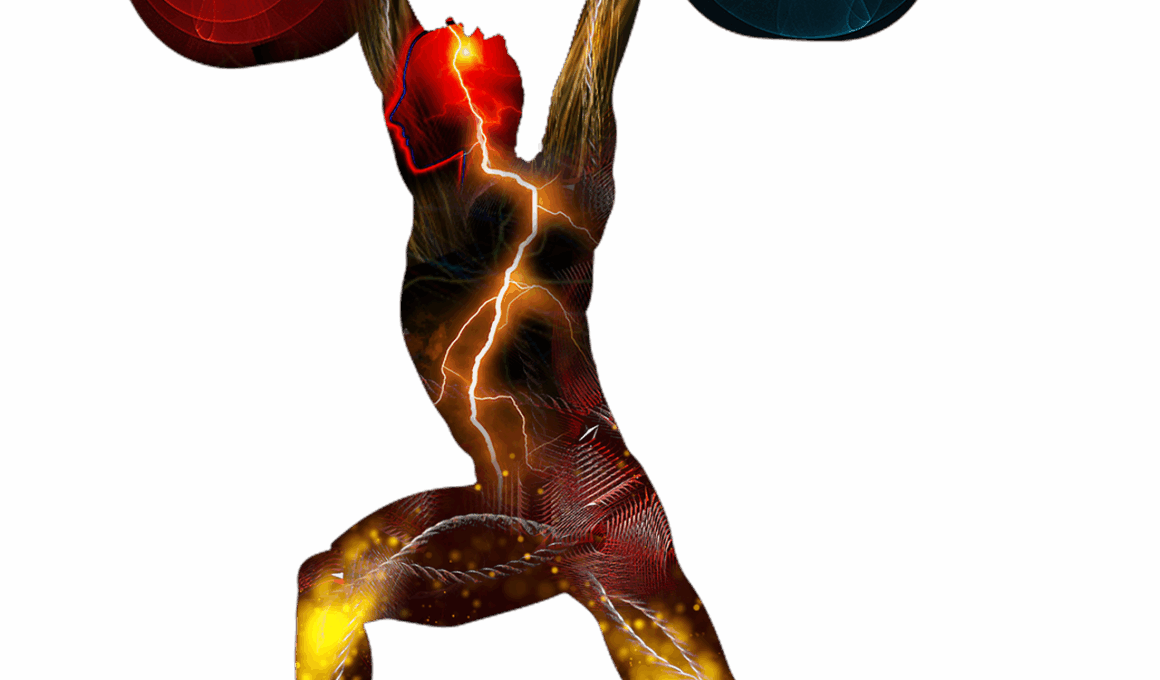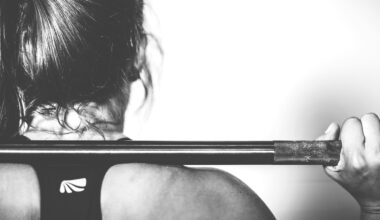Squat Better: Using a Weightlifting Belt to Enhance Your Form
When it comes to optimizing your squat performance, the use of a weightlifting belt can be a game changer. Weightlifting belts serve a vital role in enhancing core stability, which is critical while lifting heavy. The increased intra-abdominal pressure created when you wear a belt provides support to your spine and helps you maintain proper form throughout the lift. This support can be especially beneficial during squats, where improper form may lead to injuries. However, while belts are helpful tools, they should not be seen as a crutch. Belts are best utilized when heavier weights are involved. It’s important to establish good lifting techniques without a belt first. Incorporating a belt can help in focusing on maximizing your strength in the squat. For those unsure about their belt size, it’s advisable to measure your waist and consult sizing charts, since the fit is critical for optimal effectiveness. Proper usage of the weightlifting belt ensures that it sits snugly around your waist, providing the necessary support without being overly restrictive.
The mechanics behind using a weightlifting belt are fascinating. When a lifter increases the pressure in their abdomen, the belt provides physical resistance. This aids in maintaining a neutral spine during squats, avoiding unnecessary strain on your lower back. When squatting, your core must activate to stabilize your spine, and wearing a belt aids in achieving that goal effectively. Focus on breathing techniques when using a weightlifting belt, as proper breathing allows for maximum core activation. Inhale deeply when descending into the squat and exhale as you push upwards. Additionally, the psychological effect of wearing a belt can’t be dismissed either; knowing that you have added support can boost your confidence as you approach personal records. However, don’t solely rely on the belt; make sure to develop a strong core independently. Regular strength training and core exercises can enhance your performance even when not wearing a belt. In a well-rounded training program, the use of belts should complement other training methods.
Choosing the Right Weightlifting Belt
Selecting the right weightlifting belt is crucial for effective training. Not all belts are created equal, and the right type depends on your personal needs and goals. There are different styles available, including leather and synthetic options. Leather belts tend to offer better durability, while synthetic belts may provide more comfort and flexibility. Additionally, consider the width of the belt; a wider belt can provide increased support but may feel bulky for some lifters. The thickness of the belt is also an important factor. The standard thickness is typically around 10mm, which provides sufficient support for most operations. Ensure the belt is adjustable to get a snug fit; it shouldn’t be too tight to restrict movement, nor so loose that it provides inadequate support. Also, retractability is critical; belts with prong-style buckles may offer more stability compared to Velcro options for heavy lifts. Research various brands and read reviews to determine the best option that matches your lifting style. Don’t hesitate to seek guidance from experienced lifters when choosing your belt.
Incorporating a weightlifting belt into your squatting routine requires finesse and practice. Start by using the belt during your warm-up sets. Gradually introduce it as you prepare for heavier weights, ensuring that your first few lifts focus on form. Always engage your core as you brace against the belt, maintaining awareness of your body positioning throughout the lift. Pay attention to your breathing patterns, as they play a vital role in the effectiveness of the belt. As you master your form with the belt, gradually increase the weights to test its efficacy. If you feel discomfort, reassess the fit of the belt or your lifting techniques. Remember, the goal is not to rely solely on the belt, but also to enhance your natural strength capabilities. Take time to strengthen supportive muscles, which will substantially support you during heavier lifts. Ultimately, combining belt usage with comprehensive leg day programming ensures improved squat performance while reducing the risk of injury. Don’t rush the process; take the necessary steps to train your body holistically.
Common Mistakes While Using a Weightlifting Belt
Though weightlifting belts are beneficial, many lifters make common mistakes that can nullify their advantages. One common mistake is putting on the belt too loosely, which can diminish its effectiveness. A belt must sit tightly around the waist without restricting your ability to breathe. Additionally, some lifters forget to engage their core when lifting, assuming the belt alone provides support. The belt does indeed aid in maintaining stability, but it should never replace the need for a strong core. Another pitfall is relying on the belt too soon in your lifting journey. Beginners should first focus on mastering form without additional equipment before turning to a belt. Another mistake arises when lifters neglect to adjust their breathing patterns. Belts are designed to work with your natural breath; failing to sync these elements can hinder performance. Lastly, not practicing with a weightlifting belt prior to competition can lead to surprises on the platform. By avoiding these common pitfalls, you can optimize the benefits associated with weightlifting belts and perform at your best.
Weightlifting belts have garnered various opinions from the fitness community. Proponents claim that they are essential tools for lifting heavy weights and improving performance. However, skeptics argue that they may enable poor lifting form and discourage the development of abdominal strength. Finding the correct balance is essential. Consult with a trainer or experienced lifter to determine if a belt is suitable for your training regimen. If you decide to incorporate a weightlifting belt, adjust your workout program to accommodate for periods when you train without one to improve overall strength. Use the belt for heavier sets, while incorporating various core exercises during lighter sets. This dual approach will ensure that you develop strength both with and without the belt. Ultimately, the decision to use a belt should be tailored to individual needs. Assess your training goals and the functional strength required for them as you explore different techniques. Engage with the community to learn about others’ experiences. Keep evolving to find the approach that resonates the most with your personal fitness journey.
In conclusion, a weightlifting belt can enhance your squat by providing necessary support to your body, allowing you to lift heavier and maintain better form. However, it should complement a solid foundation built through proper strength training and technique. Investing in a quality belt and understanding its usage can lead to remarkable improvements in your weightlifting journey. As you incorporate the belt into your routine, make sure to balance belt usage with independent core training to develop overall strength. Observe proper lifting techniques, and ensure that you engage your core, maintaining awareness as you lift. Avoid the common mistakes associated with belt usage to unlock its full potential. Be open to learning and adjusting your approach as necessary. Each individual’s journey is unique, so tailor your routine and equipment choices to fit your needs. With diligence and practice, you will achieve impressive results in your squatting form and overall performance. Opt for a strategic approach that involves both the belt and natural strength development for optimal outcomes.
Final Thoughts on Weightlifting Belts
In summary, weightlifting belts provide several advantages in the context of squats. They offer much-needed spinal support, helping to maintain proper form and prevent injuries. As important as their benefits are, remember that they are not a substitute for foundational core strength. The best approach is to incorporate them strategically into your training regimen. Life as a weightlifter involves graduated progress and continuous learning. In combining a weightlifting belt with proficient training methods, you can see measurable improvements over time. Strengthening your core independently is vital to become a well-rounded lifter. Explore various training styles and incorporate techniques that suit your lifestyle and goals. Innovative approaches can lead to discovering new ways to enhance your performance. Be mindful of your body’s signals; don’t hesitate to modify your training routine based on personal experiences. With the right approach, a weightlifting belt can be an invaluable ally while ensuring that your focus remains on growing as an athlete. Embrace the journey through education and practice, and you will witness impressive advancements in your weightlifting prowess.


